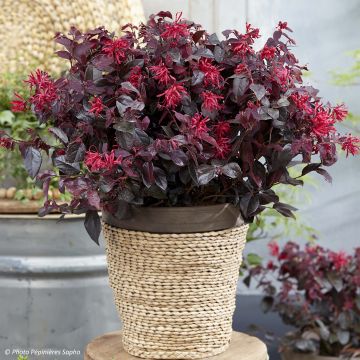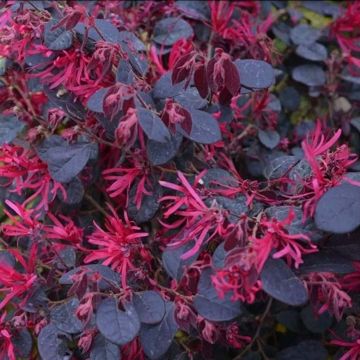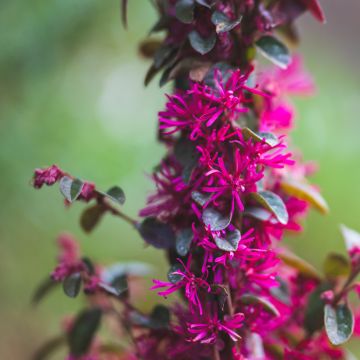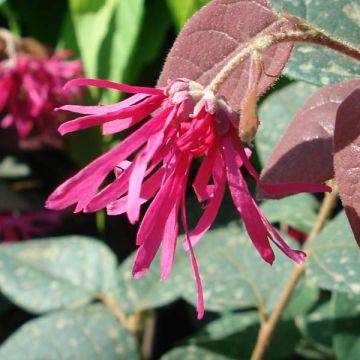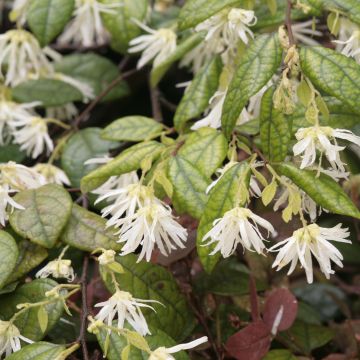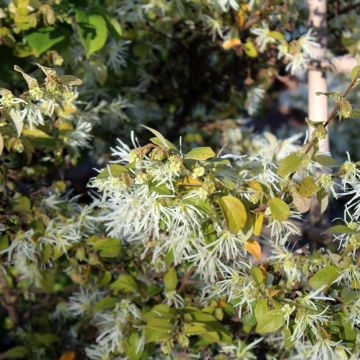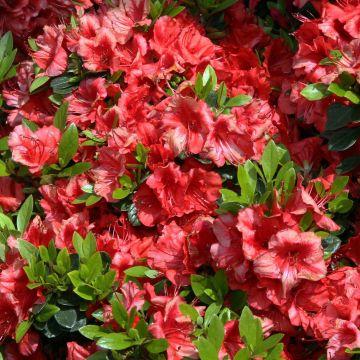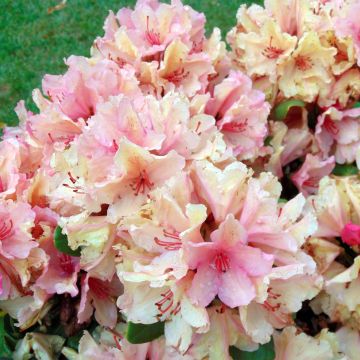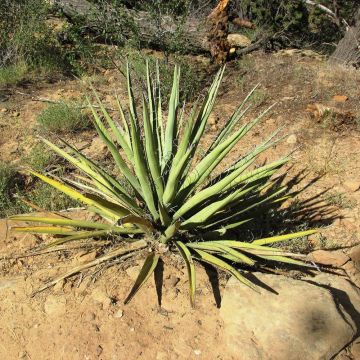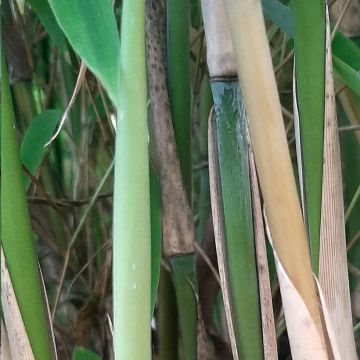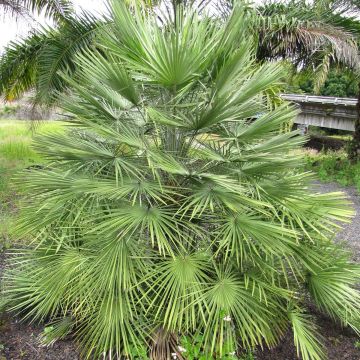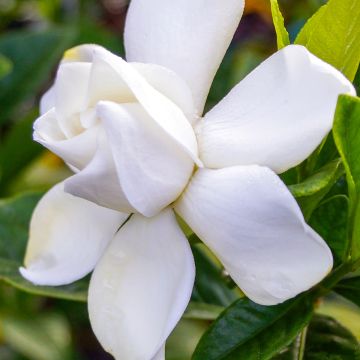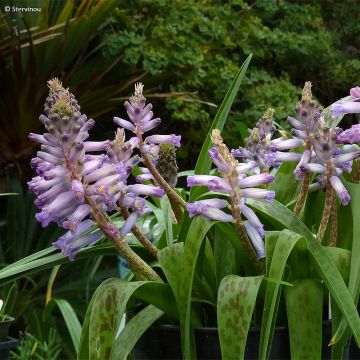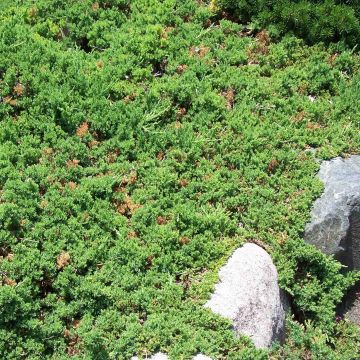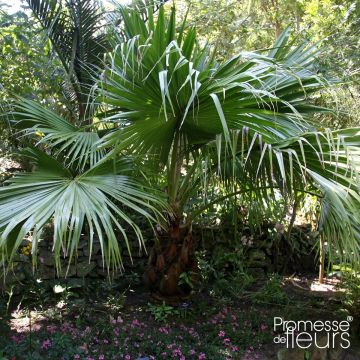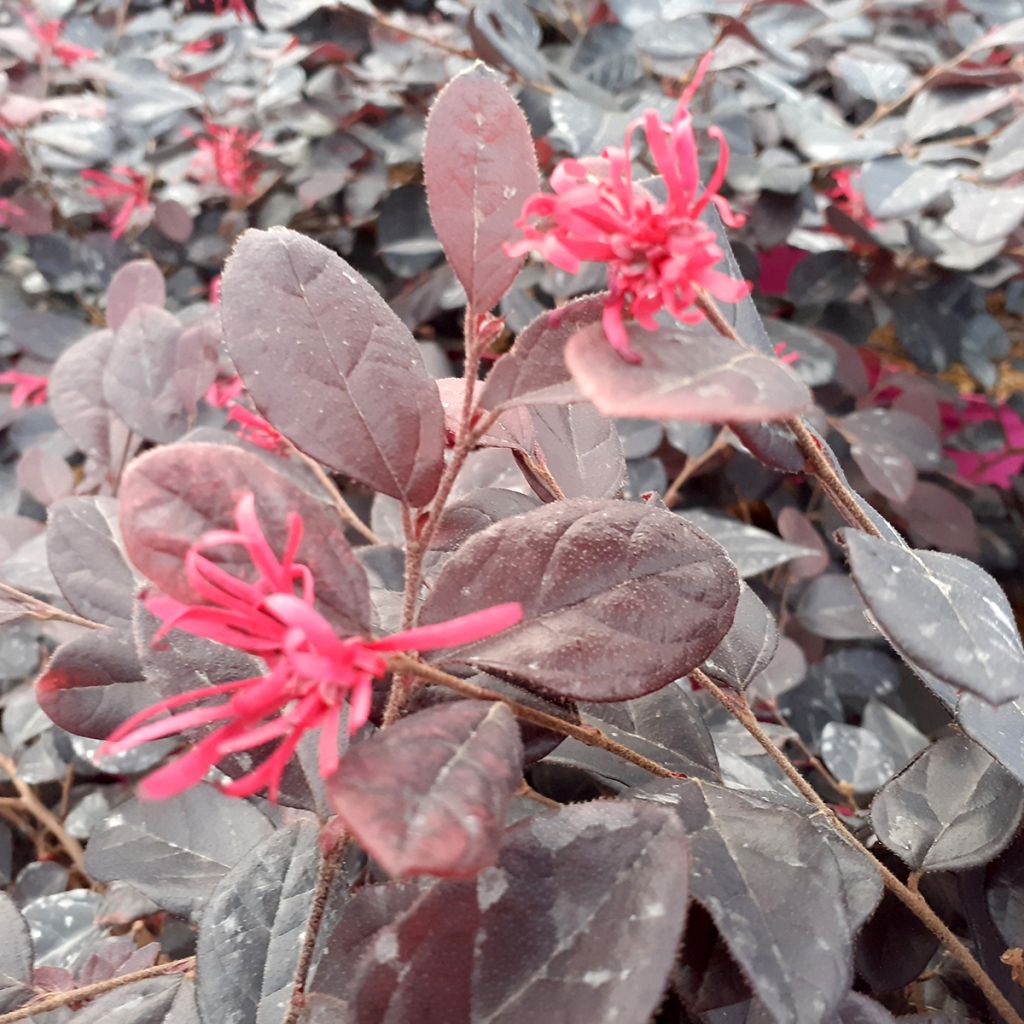

Loropetalum chinense Rouge de la Majorie
Loropetalum chinense Rouge de la Majorie
Loropetalum chinense var. rubrum 'Chap 1' ROUGE DE LA MAJORIE
Chinese Fringe Flower, Red Chinese Fringe Flower
Shrub received with a few buds and flowers, which boded well for the future. Unfortunately, it has, as often happens, been pruned savagely before shipping, giving it a modest and unharmonious silhouette. In addition, the ends of the remaining branches have been wilting for a few weeks now... So, to be continued, but disappointing.
FABIEN, 30/12/2024
This plant carries a 24 months recovery warranty
More information
We guarantee the quality of our plants for a full growing cycle, and will replace at our expense any plant that fails to recover under normal climatic and planting conditions.
From €5.90 for pickup delivery and €6.90 for home delivery
Express home delivery from €8.90.
Does this plant fit my garden?
Set up your Plantfit profile →
Description
Loropetalum chinense 'Rouge de la Majorie' has many advantages, both ornamental and behavioural. Its dark purple foliage beautifully highlights the slightly purplish red flowering in late winter and spring, which can repeat in summer. This medium-sized variety has a more upright and less wide habit than other cultivars, it tolerates the sun well and is more drought-tolerant than the species, also showing greater cold resistance. An evergreen shrub, ornamental throughout the year, to be grown in the ground or in containers.
Loropetalum is a shrub of the Hamamelidaceae family, which includes 23 genera and 80 species, often grown in gardens, such as Parrotia persica with its sumptuous autumn colours, Fothergilla with its white bottlebrush-like flowers, and of course Witch Hazels.
Loropetalum is a genus reduced to a few species, of which L. chinense is the best known. It is native to forests and thickets in the Himalayas, China, and the northern and eastern regions of India, where it grows up to 1200m altitude. It forms a dense shrub, 1.50 to 2.50m tall, with leaves 4 to 7cm long on short petioles. The flowering consists of numerous sessile flowers, resembling those of Witch Hazels, with four elongated white petals. The genus name comes from the Greek "lôron", which means strap or strip, and "petalon" (petal). There is a purple form (L. chinensis var rubrum) with smaller leaves (5cm long), from which some cultivars like 'Rouge de la Majorie' originate.
'Rouge de la Majorie' is a horticultural creation introduced to the market in 2019 by a group of nurserymen from the Centre-Val de Loire (LVHS). It stands out for its upright habit - while others tend to spread - forming a small shrub 1.20 to 1.50m tall and 80cm wide. The silhouette is irregular, a bit tousled, and the branches are dense. The foliage is significantly smaller than the species, with elliptical leaves measuring 2.5 to 3.5cm long and 2 to 2.5cm wide. They are alternately positioned on the slender branches and have a beautiful dark purple colour. The evergreen foliage is ornamental all year round.
The flowering, typical of the Hamamelidaceae family, is the second strong point of this shrub. Appearing in April in average climates, and lasting for nearly two months, it is not uncommon for it to bloom again in summer. It is particularly attractive and consists of flexible and narrow filaments, measuring approximately 2 to 2.5cm long and only 2mm wide. The flowers with four filaments bloom at the tips of numerous branches, grouped to form very decorative small tufts. Their red, slightly purplish colour, perfectly harmonises with the foliage and creates a magnificent spectacle.
This cultivar is more frost-resistant than the botanical species and can withstand temperatures as low as -15 to -17°C, once well-rooted and in well-draining soil (excess water accentuates the effects of cold). A young plant should be protected with a non-woven cover during the first winter if temperatures approach -8°C. It also tolerates the sun and drought better, but will always prefer slightly moist soil. It can be grown in full sun in average climates but will thrive better under light shade in the south. In climates that are too harsh, it can be grown in a large container to protect it during severe cold spells.
Loropetalum chinense 'Rouge de la Majorie' is a true gem for small gardens. Its limited growth allows it to fit easily in a flower bed, where its dark foliage will create beautiful combinations. If you like strong contrasts, plant a Physocarpus opulifolius 'Tiny Wine Gold' next to it, a small shrub with golden leaves in spring and pinkish-white flowers, followed by small red fruits. In the same vein, Cornus alba 'Aurea' is a dogwood whose foliage changes from golden in spring to green in summer, before turning lemon yellow and then pinkish-red! In winter, its bright red wood continues to contrast with the dark purple of your Loropetalum. The Hydrangea macrophylla 'Tricolor' will also be a great companion. This Hydrangea with beautiful green foliage variegated with yellow and cream will have a great effect next to the purple vegetation of 'Rouge de la Majorie', while its pale pink flowers will bloom from mid-summer to autumn.
Report an error about the product description
Plant habit
Flowering
Foliage
Botanical data
Loropetalum
chinense var. rubrum
'Chap 1' ROUGE DE LA MAJORIE
Hamamelidaceae
Chinese Fringe Flower, Red Chinese Fringe Flower
Cultivar or hybrid
Other Loropetalum
Planting and care
Plant Loropetalum 'Rouge de la Majorie' in a sunny, non-scorching or semi-shaded position (especially in hot climates), in well-drained but moist soil. It requires fertile, light soil, preferably non-chalky or even slightly acidic. However, Loropetalum chinense is robust and relatively tolerant of soil type. It can tolerate slightly chalky soils and is fairly drought-tolerant once well-established in deep soil, with its base shaded by large perennials or small bushes. It does not appreciate excessive water, which causes its red roots to rot. Therefore, it requires good drainage: a good twenty centimetres of coarse sand, clay pellets, non-chalky gravel, or pumice should be placed at the bottom of the planting hole. Add compost to the garden soil, leaf compost, and possibly a little sand to lighten it. When planting in a pot, choose a large container, with gravel or pot shards in the bottom. Watering should be done with non-limestone water or rainwater.
Diseases and parasites: this bush is sensitive to root rot in poorly drained soil. It could also be attacked by olive gall, which can be fatal.
Planting period
Intended location
Care
-
, onOrder confirmed
Reply from on Promesse de fleurs
Evergreen shrubs
Haven't found what you were looking for?
Hardiness is the lowest winter temperature a plant can endure without suffering serious damage or even dying. However, hardiness is affected by location (a sheltered area, such as a patio), protection (winter cover) and soil type (hardiness is improved by well-drained soil).

Photo Sharing Terms & Conditions
In order to encourage gardeners to interact and share their experiences, Promesse de fleurs offers various media enabling content to be uploaded onto its Site - in particular via the ‘Photo sharing’ module.
The User agrees to refrain from:
- Posting any content that is illegal, prejudicial, insulting, racist, inciteful to hatred, revisionist, contrary to public decency, that infringes on privacy or on the privacy rights of third parties, in particular the publicity rights of persons and goods, intellectual property rights, or the right to privacy.
- Submitting content on behalf of a third party;
- Impersonate the identity of a third party and/or publish any personal information about a third party;
In general, the User undertakes to refrain from any unethical behaviour.
All Content (in particular text, comments, files, images, photos, videos, creative works, etc.), which may be subject to property or intellectual property rights, image or other private rights, shall remain the property of the User, subject to the limited rights granted by the terms of the licence granted by Promesse de fleurs as stated below. Users are at liberty to publish or not to publish such Content on the Site, notably via the ‘Photo Sharing’ facility, and accept that this Content shall be made public and freely accessible, notably on the Internet.
Users further acknowledge, undertake to have ,and guarantee that they hold all necessary rights and permissions to publish such material on the Site, in particular with regard to the legislation in force pertaining to any privacy, property, intellectual property, image, or contractual rights, or rights of any other nature. By publishing such Content on the Site, Users acknowledge accepting full liability as publishers of the Content within the meaning of the law, and grant Promesse de fleurs, free of charge, an inclusive, worldwide licence for the said Content for the entire duration of its publication, including all reproduction, representation, up/downloading, displaying, performing, transmission, and storage rights.
Users also grant permission for their name to be linked to the Content and accept that this link may not always be made available.
By engaging in posting material, Users consent to their Content becoming automatically accessible on the Internet, in particular on other sites and/or blogs and/or web pages of the Promesse de fleurs site, including in particular social pages and the Promesse de fleurs catalogue.
Users may secure the removal of entrusted content free of charge by issuing a simple request via our contact form.
The flowering period indicated on our website applies to countries and regions located in USDA zone 8 (France, the United Kingdom, Ireland, the Netherlands, etc.)
It will vary according to where you live:
- In zones 9 to 10 (Italy, Spain, Greece, etc.), flowering will occur about 2 to 4 weeks earlier.
- In zones 6 to 7 (Germany, Poland, Slovenia, and lower mountainous regions), flowering will be delayed by 2 to 3 weeks.
- In zone 5 (Central Europe, Scandinavia), blooming will be delayed by 3 to 5 weeks.
In temperate climates, pruning of spring-flowering shrubs (forsythia, spireas, etc.) should be done just after flowering.
Pruning of summer-flowering shrubs (Indian Lilac, Perovskia, etc.) can be done in winter or spring.
In cold regions as well as with frost-sensitive plants, avoid pruning too early when severe frosts may still occur.
The planting period indicated on our website applies to countries and regions located in USDA zone 8 (France, United Kingdom, Ireland, Netherlands).
It will vary according to where you live:
- In Mediterranean zones (Marseille, Madrid, Milan, etc.), autumn and winter are the best planting periods.
- In continental zones (Strasbourg, Munich, Vienna, etc.), delay planting by 2 to 3 weeks in spring and bring it forward by 2 to 4 weeks in autumn.
- In mountainous regions (the Alps, Pyrenees, Carpathians, etc.), it is best to plant in late spring (May-June) or late summer (August-September).
The harvesting period indicated on our website applies to countries and regions in USDA zone 8 (France, England, Ireland, the Netherlands).
In colder areas (Scandinavia, Poland, Austria...) fruit and vegetable harvests are likely to be delayed by 3-4 weeks.
In warmer areas (Italy, Spain, Greece, etc.), harvesting will probably take place earlier, depending on weather conditions.
The sowing periods indicated on our website apply to countries and regions within USDA Zone 8 (France, UK, Ireland, Netherlands).
In colder areas (Scandinavia, Poland, Austria...), delay any outdoor sowing by 3-4 weeks, or sow under glass.
In warmer climes (Italy, Spain, Greece, etc.), bring outdoor sowing forward by a few weeks.

































